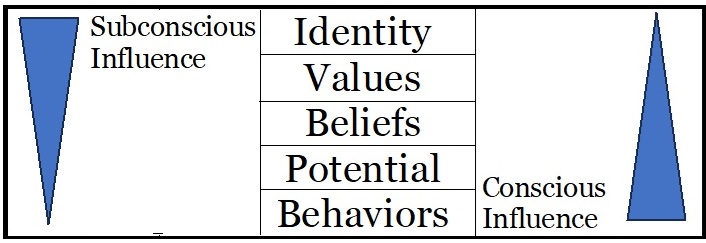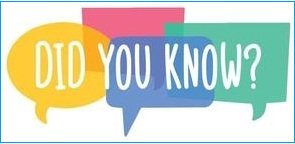Mind Layers: An Introduction

When we think about the layers of the mind, most folks simply think in terms of two layers, namely the Conscious mind and the Unconscious mind. However, there is actually a third layer called the Subconscious mind. This layer exists within a very well-defined range of brain waves and associated brain states, most specifically within the alpha and theta brain wave ranges. Yet even with that more complete description, the human mind has a much more complex organization. That's what we'll be talking about in this section. It might seem a little odd to get down to such detailed levels, but these layers all have distinctly different purposes, and impacts upon our quality of life. Thankfully, once we understand those layers and how they impact us, we can use that knowledge to accomplish our goals.
The Five Layers of The Mind
Each layer of the mind has a role to play in our character, and in our mental health. Under ideal conditions, all of these layers work together to create a well-rounded, mentally and emotionally healthy human being who can reach his or her full potential. But what are these layers? They have been labeled as:
- Behaviors - these are a collection of both interior and exterior actions, which are usually considered our "personality". They are the most visible evidence of our unique combination of conscious and subconscious rules, assumptions and expectations. Ironically, when a person is dissatisfied with his or her life, the first thing he or she tries to change is behavior. This is because the Behaviors layer of the mind resides within the conscious level, and as such we are aware of it. Behaviors are also typically visible to outside observers, so people will often comment on our behaviors in one way or another. But trying to change our lives by changing our behaviors is actually often a doomed strategy. This is because our behaviors are actually created by, and driven by, other mind layers. As such, behaviors are very difficult to change in any lasting way, until and unless we make changes in other layers, specifically our beliefs, values and/or identities layers. If this sounds drastic, never fear. Even seemingly minute adjustments can yield huge results.
- Potential - this is a constantly changing, conscious perception of what we are capable of learning and doing. Two examples could be "I can learn how to tap dance", or "I can become a brain surgeon." There is no time limit on this potential; instead it's a conscious impression of what we're capable of. Like Behaviors, our Potential is a part of the conscious mind, which is why we're aware of it. Many people assume Potential is only inherited, and is usually extremely limited. They will say things like "I could never do that". Or they'll talk about what they could do, then qualify it with some limitation, for instance "I could do that, but I don't have the time (or money, energy, patience, genetics, opportunities, connections, etc)." What they don't realize is that like Behaviors, our Potential is determined by higher layers of the mind, namely Beliefs, Values and Identities. As with Behaviors, you can dramatically change your Potential by making changes to the other layers.
- Beliefs - The Beliefs layer of the mind is a really interesting place, because like the alpha mental state, it is a place where the conscious mind and subconscious mind intersect. What exactly does that mean? It means that our beliefs are influenced by both our conscious and subconscious mind layers, and can be changed from within either the conscious or subconscious layer. Also note in our diagram above that Beliefs are about midway through the mental hierarchy of the personality. If we change a limiting Belief, we also automatically change the related Potentials and Behaviors controlled by that belief. But it's important to note that some beliefs are more subconscious than conscious, and as such might need to be accessed and changed via subconscious means.
- Values - Values are firmly embedded in the subconscious mind, and as such we often aren't even consciously aware of them. Yet they are the drivers for many of our Beliefs, Potentials and Behaviors. We rarely ever create our own values; instead, we inherit them from the people who surrounded us when we were young. We may become aware of our values thanks to their expression through our Beliefs, Potentials and Behaviors. We can also become aware of them through the language we use to describe the way we feel, and why we do certain things. Making changes at the Values level will invariably result in a cascade of changes at those lower levels as well.
- Identities - People often speak of a singular identity, as if any given person has only one identity to work with. The truth is, each of us has a wide variety of identities. Furthermore, most of these identities can and do change over the years. The Identity is the most powerful layer of the personality, because each identity in turn determines a set of Values, Beliefs, Potential and Behaviors. To make changes at any of these subordinate levels, it is often easiest and most effective to first make changes at the Identity level. Identities are firmly embedded in the subconscious level, so changes to the Identity need to happen via access to the subconscious level. Hypnosis and several NLP techniques can accomplish that.
How The Layers Relate To Each Other
The listing of the different layers, and the diagram at the top of this page, is not just a random list of these layers. I presented them in order of their hierarchy, and in terms of their influence from either the Conscious and/or Subconscious mind.
Furthermore, there is a more subtle hierarchy to the layers. The "ruling" layer is the Identity. Each identity we have in life carries with it a variety of related values, beliefs and behaviors. This explains a phenomenon we've undoubtedly seen in the people around us, where their behaviors, opinions and choices will change dramatically as they move from one identity to another. For instance, one marked change often accompanies the move from being a student to being a young adult. Another big shift occurs when someone moves from an identity as a single person to one being in a relationship, and then again to being in a marriage. Additional examples are seen when people adopt very different beliefs, values and behaviors when they transition from being non-parents to being parents, from unemployed to employed, or from employed to retired. These changes aren't random. This is because of what behaviors, beliefs and values were modeled by individuals within certain identities as we grew up.
What If These Layers Conflict
With Each Other?
We spoke before about how these layers all influence each other, and under ideal circumstances they all line up and support each other. That is actually called alignment. When a person's identity, values, beliefs, potential and behaviors are all aligned, that person can reach individual goals seemingly without effort. However, in real life, most of us have one or more identities, values, and/or beliefs which interfere with our goals. This results in a behaviors which contradict or sabotage our goals. How do we get all our layers into alignment?
Achieving Alignment,
Achieving Our Goals
You might look through this list and think "gosh, I have a lot of beliefs, values and/or identities which are dysfunctional or somehow undesirable. How do I make changes?" Or you might think "wow, I never thought I had the potential to do X, but now I sorta wonder if I could." Or you have behaviors which you don't like, that you've repeatedly tried to change, only to end up repeating them. How do you work with these layers to get the changes you want? In other words, how do you craft a consistent, healthy, functional combination of identities, values, beliefs, potentials and behaviors?
The short answer is: through NLP.
The longer answer is a little bit more involved. The changes we want to make in life depend upon the level(s) involved:
- If we need to change one or more beliefs or potential, we can do that via several different NLP techniques which work at the conscious level.
- If we need to change values or identities, we need to do that with hypnosis or NLP techniques that work at the subconscious level.
One of the most effective way to change things is to start at the top with the identity, and replace a dysfunctional identity with one that supports our goals. Then that one change will cascade down through the other layers, resulting in much better alignment, with the least amount of effort on our part.
If you wish to make changes, there are two ways to proceed:
- You can learn the techniques of self-hypnosis and/or NLP, and use these techniques on yourself to make these changes.
- You can work with a coach or NLP practitioner, who will help you achieve your desired changes.
If you would like to learn the techniques of self-hypnosis and/or NLP, check out the classes available through Transform Destiny. With their comprehensive set of classes, you can learn any hypnosis or NLP technique you need to make these changes. You can even take classes to become certified in hypnosis or NLP.
If you'd prefer to work with a hypnotherapist or NLP coach, contact me for a free consultation visit. We'll discuss your goals and the obstacles you've encountered trying to reach them. Then we'll work out a plan for how to overcome those obstacles, make any needed changes to your identities, values and beliefs, and help you reach your full potential.
|
Shopping Cart |
|
Contact Me For Help Reaching Your Goals

When you're ready to move forward, push through obstacles and make real progress towards your goals, Contact Me today.
New Products and Services Request Form
Do you have a product or service request that you don't already see listed here? I'd love to hear your ideas! Please feel free to either Contact Me or fill out my new Product and Service Request Form.
Thanks for your suggestions!
